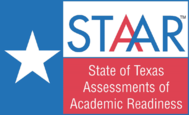
Matura or its translated terms is a Latin name for the secondary school exit exam or "maturity diploma" in various European countries centered around the former Austro-Hungarian Empire, including Albania, Austria, Bosnia and Herzegovina, Bulgaria, Croatia, Czech Republic, Hungary, Italy, Kosovo, Liechtenstein, Montenegro, North Macedonia, Poland, Serbia, Slovakia, Slovenia, Switzerland and Ukraine.

The Florida Comprehensive Assessment Test, or the FCAT/FCAT 2.0, was the standardized test used in the primary and secondary public schools of Florida. First administered statewide in 1998, it replaced the State Student Assessment Test (SSAT) and the High School Competency Test (HSCT). As of the 2014-2015 school year FCAT was replaced in the state of Florida. The Florida Department of Education later implemented the Florida Standards Assessments (FSA) for English Language Arts, Reading, Mathematics and a Writing or typing test. A Comprehensive science test is still used for grades 5 and 8.
Education in Vietnam is a state-run system of public and private education run by the Ministry of Education and Training. It is divided into five levels: preschool, primary school, secondary school, high school, and higher education. Formal education consists of twelve years of basic education. Basic education consists of five years of primary education, four years of secondary education, and three years of high school education. The majority of basic education students are enrolled on a daily basis. The main goals are general knowledge improvement, human resources training and talent development.
Seventh grade is the seventh year of formal or compulsory education. The seventh grade is typically the first, second or third year of middle school. In the United States, children in seventh grade are usually around 12–13 years old. Different terms and numbers are used in other parts of the world.
Ninth grade is the ninth or tenth year of formal or compulsory education in some countries. It is generally part of middle school or secondary school depending on country. Students in ninth grade are usually 14–15 years old, but in some countries are 15–16.
Tenth grade is the tenth year of formal or compulsory education. It is typically the second year of high school. In many parts of the world, students in tenth grade are usually 15 or 16 years of age.
Eleventh grade is the eleventh year of formal or compulsory education. It is typically the third year of high school. Students in eleventh grade are usually 16–17 years of age.

The Texas Assessment of Knowledge and Skills (TAKS) was the fourth Texas state standardized test previously used in grade 3-8 and grade 9-11 to assess students' attainment of reading, writing, math, science, and social studies skills required under Texas education standards. It is developed and scored by Pearson Educational Measurement with close supervision by the Texas Education Agency. Though created before the No Child Left Behind Act was passed, it complied with the law. It replaced the previous test, called the Texas Assessment of Academic Skills (TAAS), in 2002.
The Missouri Assessment Program (MAP) is an annual set of mandatory standardized tests taken by students in the U.S. state of Missouri.
In New York State, Regents Examinations are statewide standardized examinations in core high school subjects. Students are required to pass these exams to earn a Regents Diploma. To graduate, students are required to have earned appropriate credits in a number of specific subjects by passing year-long or half-year courses, after which they must pass at least five Regents examinations in some of the subject areas. For higher-achieving students, a Regents with Advanced designation and an Honors designation are also offered. Students with disabilities or enrolled in an English as a Second Language program are able to earn a local diploma.

The Nationwide Unified Examination for Admissions to General Universities and Colleges, commonly abbreviated as Gaokao, is the national undergraduate admission exam of China, held in early June every year. The exam is held by provincial governments under the Ministry of Education's orders and is required for undergraduate admissions to all higher education institutions in the country. The exam is taken by high schools' graduating seniors at the end of their final year.
The National Diploma is a diploma given to French pupils at the end of 3e, This diploma is awarded to students who are or were within French cultural influence, including France itself, Morocco, Tunisia, Lebanon, Syria and Algeria, the first two having been french protectorates, while the middle two were under French Mandate after World War I whilst the last was a French territory from 1830 until its independence in 1962. Pupils outside of France who study in French schools belonging to the Agency for French Teaching Abroad network also sit this exam.

Vincent Memorial Catholic High School is a private, Roman Catholic high school in Calexico, California. It is located in the Roman Catholic Diocese of San Diego The school serves approximately 300 students.

Abby Kelley Foster Charter Public School is a K–12 school located at 10 New Bond St., Worcester, Massachusetts, United States in former Heald Machine Company buildings. The school was founded in 1998.

Education consists of public and private schools in the U.S. state of Georgia, including the University System of Georgia, Technical College System of Georgia, private colleges, and secondary and primary schools.

The Arkansas Department of Education (ADE) is a cabinet-level agency of the Arkansas state government overseeing public education for K-12, higher education institutions, and career and technical education.

The State of Texas Assessments of Academic Readiness, commonly referred to as its acronym STAAR, is a series of standardized tests used in Texas public primary and secondary schools to assess a student's achievements and knowledge learned in the grade level. It tests curriculum taught from the Texas Essential Knowledge and Skills, which in turn is taught by public schools. The test used to be developed by Pearson Education every school year, although the most recent contract gave Educational Testing Service a role in creating some of the tests, under the close supervision of the Texas Education Agency.
A high school diploma is a diploma awarded upon graduation of high school. A high school diploma is awarded after completion of courses of studies lasting four years, typically from grade 9 to grade 12. It is the school leaving qualification in the United States and Canada.

The Finnish Matriculation Examination is the matriculation examination taken at the end of secondary education to qualify for entry into university. In practice, the test also constitutes the high school's final exam(s), although there is a separate diploma on graduating from high school, based not on the exam, but on the grades of individual courses. Since 1919, the test has been arranged by a national body, the Matriculation Examination Board. Before that, the administration of the test was the responsibility of the University of Helsinki.









